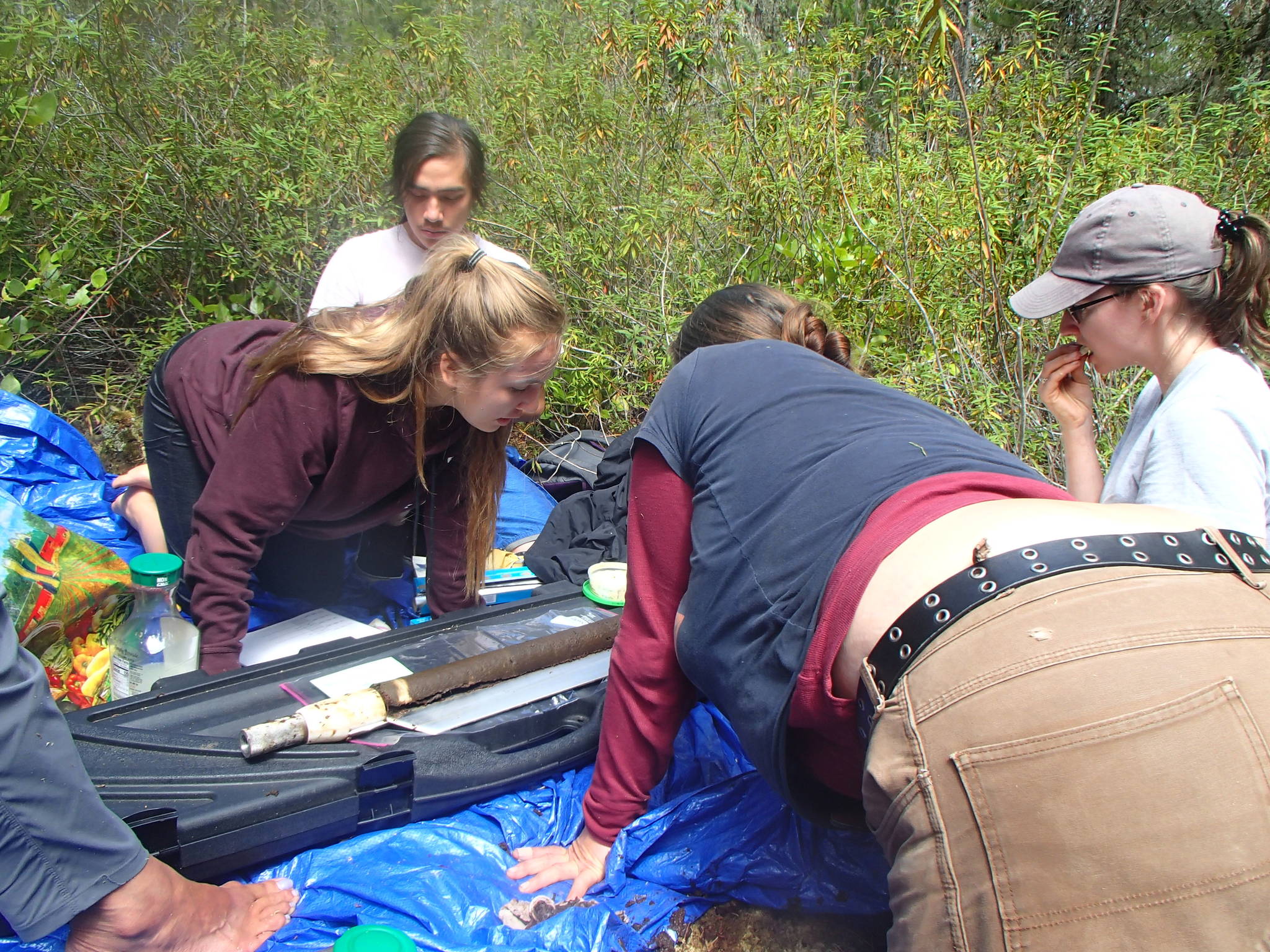Submitted by Kwiaht
Kwiaht researchers and students have recovered a 30-foot long peat core at Hummel Lake that represents a 10,000-year history of changes in the climate and vegetation of Lopez. “At 29 feet we hit undisturbed blue glacial clay,” said project leader Madrona Murphy. “That marks where the last chunk of ice lay when it carved out the lake basin.” Samples are being processed at the Advanced Lab in Lopez High School.
The core took several days to drill by hand with a special stainless steel cutting tool and 32 feet of aluminum drive rods that are bolted together one by one as the drill goes down, and then disassembled to bring the drill head up again. Samples were painstakingly retrieved incrementally, 20 inches at a time. At times it took four people to pull the drill bit up through sticky wet peat, which team members described as “looking like thick chocolate pudding.”
Murphy recalls excitement when the drilling reached 18 feet and there was a thick band of pale gritty volcanic ash in the sample marking the cataclysmic explosion of Mount Mazama 7,700 years ago that created Crater Lake. The ash layer provides a yardstick for estimating the rate of peat accumulation at the study site, according to Murphy.
Peat deposits can be very acidic and anaerobic, Murphy explains. Under these conditions, plants and animals decay so slowly that they can still be recognizable after thousands of years. “It’s something like being pickled and canned in vinegar,” said Murphy.
The Kwiaht team has begun sorting seeds, pollens, and pieces of leaves and stems from the peat samples. Freshwater diatoms and other microscopic organisms have also been found intact in the peat.
Plant parts preserved in the core show a gradual change over millennia from a lake surrounded by sedges to a thickening bed of sphagnum mosses, and from an open boggy “prairie” to a woodland. A key question for researchers is whether this succession was influenced by the Coast Salish peoples that lived on Lopez from about 8,000 years ago, including several year-round settlements from about 2,500 years ago. Tiny bits of charcoal preserved in the peat will be studied as evidence of fires. “We did notice charcoal flakes near the top of the core,” Murphy says, “but that would be after 1800 and coincide with clearing by European settlers, who were reported in the 1850s to have burned much of the island.”
This scientific and educational project is supported by the Mills-Davis Foundation, and hosted by the San Juan County Land Bank and Lopez Island School District. University of Washington paleobotanist Cynthia Updegrave is the project’s technical adviser. The field team included Kwiaht researchers Russel Barsh, Christian Oldham, Amber Notaro and Matthew Peck; Kwiaht summer apprentices Emma Rodgers and Fionoula Bourne; and students Sadie Olsen and Cameron Mawson from Lummi.
Kwiaht is seeking volunteers to help sift and identify plant remains in samples during the school year. If interested, you can send an email to info@kwiaht.org.




